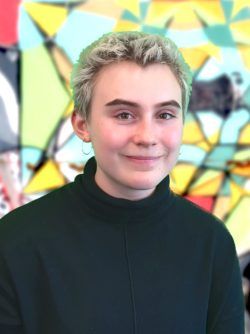Gulp
Gulp. It’s the noise your throat makes when you swallow. When you push something down and out of sight: food, thoughts, emotions. It happens when you know you’ve done something wrong. When you’re excited or nervous or afraid.
A gulp has many meanings, bodily, psychological and emotional. It’s the best word I can think of to describe an eating disorder and all the hunger, fullness and fear that comes with it. It’s also the best word I can think of to describe queerness: a quiet but definite gesture that captures all the pain and thrill of growing up different. That’s why the zine we’re currently making on the stories of LGBTQIA+ people with eating disorders will be called Gulp. It covers all bases. It’s a way of summing the whole thing up in one word.
Gulp’s storytellers have different ways of articulating their experiences. Stigma lives on. So does creativity. When combined, these two things make us speak in riddles. Our contributors cloak their stories in metaphors and imagery – of leaves, funerals and their great aunt’s tights. Is it hiding? Avoiding the truth in a publication whose soul purpose is to promote it? I don’t think so. Metaphors give unique and individual power to ideas that may not seem all that relatable to the average bystander. One of the writers (who wishes to remain anonymous) uses labels and boxes to make their point.
Our contributors cloak their stories in metaphors and imagery, of leaves, funerals and their great aunt’s tights.
“Having an eating disorder and being queer is like having to fit into two very uncomfortably shaped boxes. There are no set rules to being queer, just as there are no set rules to disordered eating, yet everyone is constantly trying to fit you into the most suitable box.”
For this writer, boxes and labels illustrate the discomfort and not-fitting-in-ness of both having an eating disorder and being LGBTQIA+, and they present the crossover between these two elements of experience in a relatively simple and subtle way. This contributor doesn’t have to talk about the glaring problems, the ultimate reasons why this zine is necessary, because that’s our job.
People working in health and care have a responsibility to advocate for those not getting the care they need, to notice the gaps and fill them. The scant research tells us that, in 2018 alone, 1 in 4 non-binary people experienced an eating disorder in the UK, but there are still no healthcare resources, support or recognition for them. In this case, we’re asking LGBTQIA+ and eating disorder services to speak up, to collaborate and do more for the people they serve.
Gulp, the zine telling the stories of LGBTQIA+ people with eating disorders, will be published online May. Want to come to our launch event, see the zine in print for the first time and learn more about why this is all worthwhile? Get in touch.
 Seren Thomas13 February 2020
Seren Thomas13 February 2020

Comments
Looking forward to seeing this Zine. Feel there is such a lot to learn from the struggles of those trying to understand themselves better when it comes to being gender diverse and thoughts and feelings about your body.
Such important work that is being done by Seren Thomas. I am so glad that this is finally being done, what a star 🌟. Thank you for this!